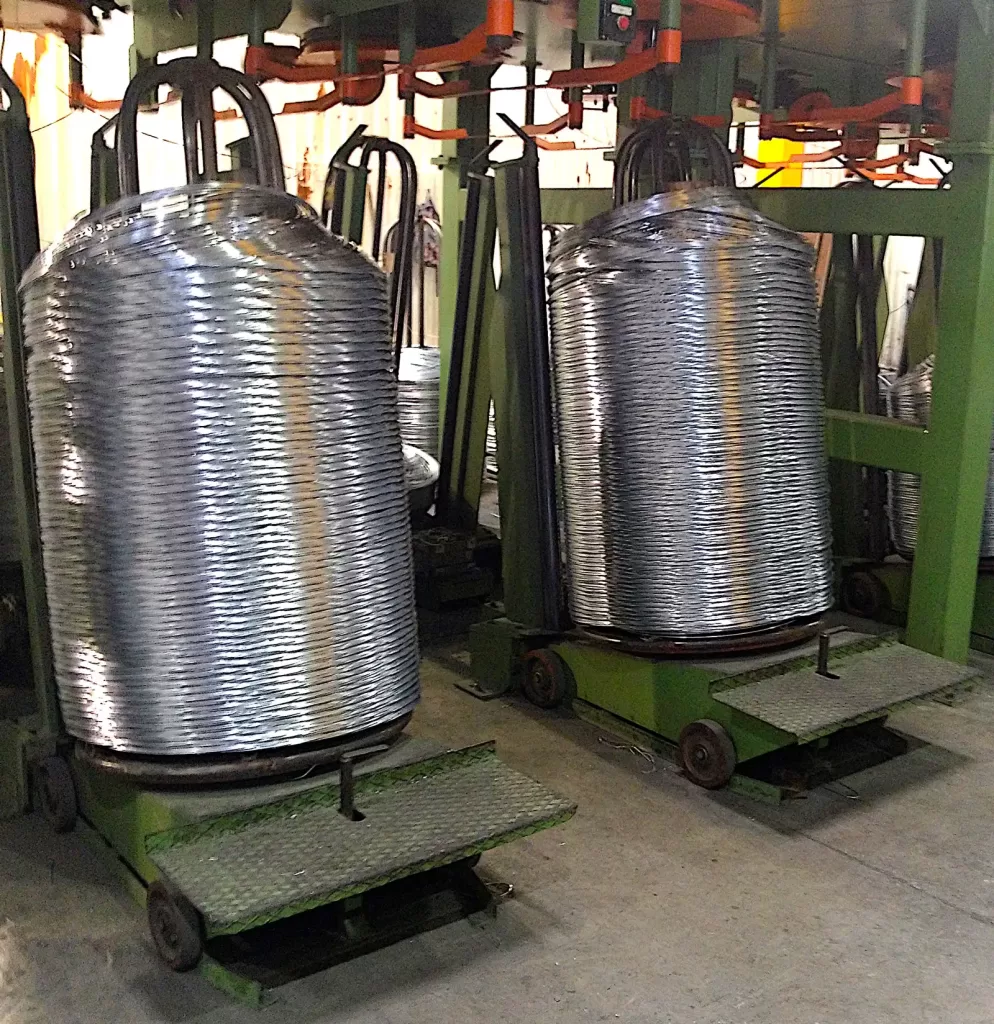Streamlining Wire Coil Handling: Inside Automatic Compacting and Strapping Systems
Handling large, bulky wire coils presents significant logistical challenges in many manufacturing and processing environments. Efficient storage, safe transportation, and maintaining coil integrity are paramount. Automatic wire coil compacting and strapping systems offer a robust solution to these challenges, streamlining operations and improving overall efficiency. This article delves into the mechanics, components, and benefits of these essential automated systems.

The Need for Compacting and Strapping
Uncompacted wire coils occupy considerable space and can be unstable, posing risks during handling and transport. Automated compacting addresses this by:
- Reducing Coil Volume: Compression significantly decreases the physical footprint of each coil, optimizing warehouse space and potentially lowering storage costs.
- Enhancing Stability: Compacted coils are denser and more stable, making them easier and safer to stack, handle, and transport.
- Improving Transport Efficiency: More compacted coils can fit into a given shipping container or truck, reducing the number of shipments required and lowering transportation expenses.
- Securing the Coil: Strapping maintains the compacted form, prevents unwinding, and bundles the coil securely for subsequent processes or delivery.

wire winding with baskettt The Automated Compacting and Strapping Process
Modern automatic systems integrate several steps into a seamless workflow:
- Infeed: Wire coils are typically loaded onto an infeed conveyor or directly onto a coil car or tilter that positions them correctly for the system.
- Compaction: The coil enters the compaction station. Here, a coil compacting machine utilizes hydraulic or pneumatic force to press the coil axially or radially, reducing its volume and increasing its density. The compaction force and cycle time can often be adjusted based on the wire type, gauge, and coil size to achieve consistent results without damaging the material.
- Strapping: Immediately following compaction, the coil moves to the strapping station. Automatic strapping heads apply PET (polyester) or steel straps circumferentially at predetermined intervals around the coil. The system tensions the strap, seals it (using heat sealing, friction welding, or metal seals), and cuts it. Multiple straps are usually applied for optimal security.
- Outfeed: The compacted and strapped coil is then transferred via conveyor or other handling mechanisms to a collection area, ready for storage, further processing, or shipping.
Key Components of an Automatic Wire Coil Compacting System
These sophisticated systems rely on the coordinated function of several critical components:
- Coil Loading/Infeed System: This mechanism safely and accurately introduces the wire coil into the processing line. Options range from simple roller conveyors to integrated coil cars and tilters for handling very large or heavy coils.
- Wire Guiding System: Ensures the wire (if being processed continuously before coiling and compacting) or the coil itself is properly aligned as it moves through the system, preventing jams and ensuring accurate compaction and strapping.
- Compaction Station: The core of the system. Typically consists of a robust frame housing a platen or press mechanism driven by hydraulic cylinders or, less commonly, pneumatic or electromechanical actuators. Precise control over applied force is crucial.
- Strapping Unit(s): Includes the strapping head(s), strap dispenser(s), and strap guide chutes. The choice between PET and steel strapping often depends on the coil weight, handling requirements, and environmental considerations. Modern heads are designed for reliability and consistent tensioning and sealing.
- Feed Control and Drive Systems: Motors, gearboxes, sensors, and variable frequency drives (VFDs) control the movement of the coil through the line, ensuring proper positioning and synchronized operation between stations.
- Tension Control (Strapping): Critical for ensuring straps are applied tightly enough to secure the coil without damaging the wire product. Load cells or motor torque monitoring provides feedback for precise tension adjustment.
- Outfeed/Collection System: Conveyors, accumulation tables, or robotic handling systems that move the finished coils away from the line for pickup or integration into downstream processes.
- Safety Features: Essential for protecting personnel and equipment. Includes emergency stops (E-stops), safety interlocks on access doors, light curtains or safety scanners around hazardous areas, and overload protection for drives and presses. Compliance with relevant safety standards (e.g., ISO, ANSI) is critical.
- Programmable Logic Controller (PLC): The central brain of the system, coordinating the sequence of operations, monitoring sensors, controlling actuators, and executing the programmed process parameters for different coil types.
- Human-Machine Interface (HMI): Typically a touchscreen panel allowing operators to monitor the system status, select operating modes, adjust parameters (e.g., compaction force, number of straps, strap tension), view diagnostics, and receive alerts or alarms.

wire winding 1 Conclusion
Automatic wire coil compacting and strapping systems represent a significant advancement in material handling for the wire industry and related fabrication sectors. By automating the process of reducing coil volume and securing it for transport and storage, these systems enhance operational efficiency, improve workplace safety, optimize storage space, and reduce logistical costs. Understanding the process and the key components involved allows facilities to better leverage this technology for streamlined, effective wire coil management.## Streamlining Wire Coil Handling: Inside Automatic Compacting and Strapping Systems
Handling large, bulky wire coils presents significant logistical challenges in many manufacturing and processing environments. Efficient storage, safe transportation, and maintaining coil integrity are paramount. Automatic wire coil compacting and strapping systems offer a robust solution to these challenges, streamlining operations and improving overall efficiency. This article delves into the mechanics, components, and benefits of these essential automated systems.

